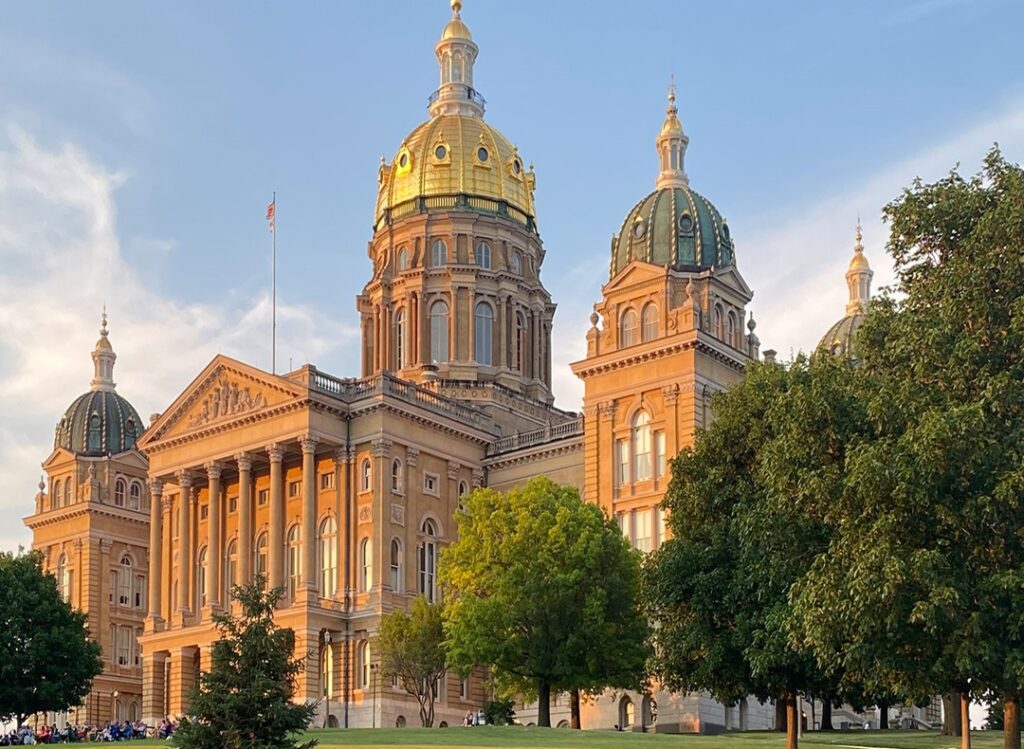Fun that’s good for business?
Polk City recreation bond issue has economic development implications, too

Polk City’s election next month on whether or not to sell $8.6 million in bonds to build an aquatic center and sports fields has recreational and economic implications beyond the north end of the suburb near Big Creek and Saylorville lakes.
In addition to offering new recreation choices in a city that is gaining many families with children, the project would open a new area for commercial development and set the stage for the connection of the High Trestle Trail and the Neal Smith Trail.
“This is tremendously important for economic development,” Polk City Mayor Jason Morse said of the new project.
A public vote is set for Aug. 4 on the $11 million project, which would include donations, grants and in-kind services in addition to the city bond proceeds. The city needs 60 percent approval of voters to sell the bonds. Taxes on a $250,000 home would rise by about $41 a month.
In August 2011, 82 percent of voters opposed a bond issue vote that included sports fields but not an aquatic center.
This time, Knapp Properties is prepared to donate 28.5 acres worth $570,000 for the aquatic center and soccer fields near Polk City’s technology park, in return for the city’s commitment to extend Vista Lake Road through the area, at an estimated cost of up to $3 million. That would help the area grow, the city and developers say.
Morse said the road extension would open much-needed commercial land for development, while also serving the recreation area. “We are at our limit for commercial property in town without expanding this road.”
Said John Calhoun, executive director of Polk City Development Corp., a private organization: “We can’t show land without a road. You need to build the road, or they aren’t coming.”
But there is another element to the recreational draw with regional implications. The proposed complex is just over a mile from the highly popular High Trestle Trail, and the city is looking into linking the two areas. That would give riders a chance to ride a new loop from Ankeny, and would open the possibility of linking it all to the Neal Smith Trail, which runs west of Polk City to downtown Des Moines.
Polk City has mapped a route through town that would combine bike routes on streets and new stretches of trail. Morse declined to disclose the cost estimate because it was still under review. He is working with Polk County and the Des Moines Area Metropolitan Planning Organization to weigh grant options.
The project includes revamping the fields near the Mile Long Bridge. Combined, that site and the new area along Vista Lake Road would have 13 soccer fields and six baseball and softball fields.
Gerry Neugent, president and CEO of Knapp Properties, said the city is wise to pursue facilities to serve a growing population. For Knapp, the donation is a combination of good corporate citizenship and a way to improve access to an area the company plans to develop, he added.
“The population of Polk City has been growing steadily,” Neugent said. “There are a lot of young families. This is something that would be attractive to people and businesses.”
Since 2000, Polk City has grown more quickly, jumping to 3,926 in 2013 from 2,349 in 2000. The median age is 32, which means many families have young children.
The sports fields are full. “We don’t have a Plan B,” Morse said. “If this doesn’t pass, I’m not sure where we are going to put (the players).”
Neugent said the pool and ball fields would help boost property values and would make it easier to develop lots in the area.
Bond-issue supporters contend the project would boost property values by 2 percent immediately and 1 percent a year for the next decade. They also say that the expected construction of 500 new homes in the next five years would lower the tax tab for all property owners.
Polk County Supervisor Robert Brownell said he’s worked with the city to prepare for the possible link between the recreation complex on the north side of Polk City and the nearby High Trestle Trail.
Brownell has been working with the Des Moines Area Metropolitan Planning Organization to assess grant options, and to plan a route. Some paths that have made sense have been a challenge because of the rolling topography in the area, but there is high interest in adding the connection, he said.
“Polk City is one of those small towns that really is growing with a lot of young families moving in,” Brownell said. The numbers are there, with the young families (to pass the bond vote). Whether they actually get out and vote is the next question.”










